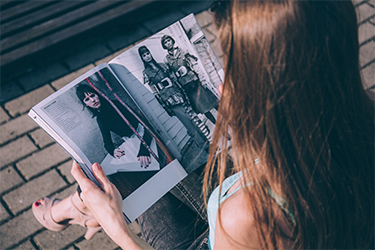 It’s a surge … a resurgence … even a renaissance if you will … of new print magazine titles. And it’s making the marketing industry sit up and take notice.
It’s a surge … a resurgence … even a renaissance if you will … of new print magazine titles. And it’s making the marketing industry sit up and take notice.
“What magazines have is the pull of consumer engagement. I’m sitting down because I want to read a magazine,” says Linda Thomas Brooks, president and CEO of the MPA. “Consumers are in control. Every page has contextual relevance, and that’s what makes advertising in print so important. The whole package is contextually relevant.” She adds, “When advertisers say they’re data-driven, I have the data to show that magazines work.”
That quote from Brooks was cited by Matthew Schwartz of ANA to demonstrate that print magazines are finding new acceptance as the long pants of brand fashion.
“The death of print media has been greatly exaggerated, Schwartz writes. “Again. Since the web started to ascend in the early 2000s it’s been an ongoing parlor game within marketing circles as to when print products would meet their ultimate demise. However, a surge in new print magazines reaffirms that being a media prognosticator can be a pretty dicey business these days.”
“In total, 325 new print magazines debuted with a frequency of quarterly or more within the last two years, according to the MPA,” Schwartz continues. “New titles run the cultural gamut. These titles include Meredith’s Happy Paws, which caters to pet care, 1843, a lifestyle magazines reintroduced by The Economist, and Compulsive, which covers deep-dive conversation focusing on beauty, health, and fashion. The titles encompass multiple markets, ranging from automotive to travel to science/technology.”
Is it the revenge of analog, as Schwartz asks, or something more basic yet profound?
“Having watched their elders, er, millennials, be consumed by the digital gestalt, gen Z is embracing the physical space and showing more of an appreciation for the ‘touch and feel’ that tactile products like magazines provide,” he writes. He cites some solid reasons for marketers to rework their ad budgets to include more ink on paper.
In the first place, buying print ads is less complex than digital ad buys.
“Just hop on an edit schedule and negotiate a rate,” he writes. “And because many of the new print magazines are niche there’s little mystery about the demographics of the audience or the loyalty that publishers can show via time spent with the publication (among other metrics that are much more legitimate than likes and/or followers).”
He believes print ads are far safer for advertisers also, without the brand safety issues inherent in digital buys.
“In contrast to the web, print ad buys don’t suffer the same risks as online ad buying,” Schwartz continues. “Ad buyers might even negotiate to see precisely what type of content will surround their message. And it’s a static message, to boot. There’s no chance that after purchasing a print ad vituperative content is going to pop up next to the ad and put the brand in a compromising position — at which point the ad buy morphs into crisis management.”
Finally, appearing in print delivers a proven brand boost, what we call the trust bump around here, while digital’s reputation continues to drop.
“A 2017 MarketingSherpa study of 1,200 consumers, for example, found that print publications are the most trusted advertising channel when people want to buy something (82 percent),” Schwartz writes. “At the bottom of the heap, mobile phone ads (39 percent), ads in podcasts (37 percent) and online pop-up ads (25 percent).”
It’s no wonder that print is now the new old brand darling, as even digital apps like Bumble and Netflix launch their own print titles.
Yes, digital has disrupted the industry. Yes, print advertising took a big hit because of it. But today’s print offers advertisers a rare value – an opportunity to engage with a committed audience in a medium they enjoy and want to consume. This is the new age of print magazines, and creative publishers are learning how to leverage it.
